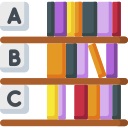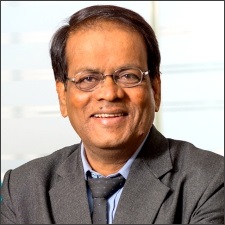
Assam Don Bosco University (ADBU), Guwahati
|
Quick View of Assam Don Bosco University, Guwahati |
|
|
Established In |
2008 |
|
Location |
Guwahati |
|
University Type |
Private |
|
Affiliation |
UGC, AIU |
|
Accredited By |
NAAC |
|
Course Offered |
43 |
|
Number of Offered |
2300+ |
|
Highest Package |
3.86 LPA |
|
Average Package |
2 LPA |
|
Facilities |
Library, Cafeteria, Gym, Wi-Fi, Lab, Hostel, Medical |
Assam Don Bosco Institution (ADBU) is an Assam-based private state university that was founded in 2008. It was founded in 2007 under the Assam Private Universities Act and was formally constituted in 2009 under the Assam Don Bosco University Act. The Distance Education Bureau (DEB) of India and the All India Council for Technical Education have both approved the University (AICTE).
Graduate, postgraduate, and doctoral programmes are available at ADBU in Technology, Business Management, Humanities, Social Sciences, and Life Sciences. Distance Learning courses are also available at the university.
Courses
Highlights
- International Collaboration with the University of Chester in the United Kingdom, the Asian Institute of Technology in Bangkok, the DeSales University in Pennsylvania in the United States, and others.
- NAAC, DEB, AICTE, IAU, IUS, ACU, and AIU approvals, accreditations, and membership.
ADBU- Assam Don Bosco University Course & Eligibility
The University provides 43 undergraduate, postgraduate, and doctoral courses in fields such as Humanities and Social Sciences, Commerce, Information Technology, Teaching and Education, Law, and Health Sciences, among others.
|
Course |
Eligibility Criteria |
|
BBA |
A minimum aggregate of 60% in Class 12 |
|
ME Computer Science & Engineering, Structural Engineering |
A minimum aggregate of 60% aggregate in BE or BTech from any recognised board |
|
MBA |
A minimum aggregate of 60% aggregate in bachelor’s degree with relevant subjects |
ADBU- Assam Don Bosco University Admission
The application procedure can be performed online or offline. The following are the eligibility criteria for the ADBU admissions process:
- Admission to BE/Btech programmes is based on performance in the qualifying examination and the JEE Main/Don Bosco University Undergraduate Test (DBU-GET)
- Admission to the MBA programme is based on CAT/ MAT/ XAT/ CMAT scores, followed by Group Discussion (GD) and Personal Interview (PI).
- Selection for MTech, MCA, and MSW programmes is based on performance in the university's admission exam, DBU-PGET, as well as a personal interview.
ADBU- Assam Don Bosco University Placement
The University supports students by counselling for the campus placement drive. There is no information available for placement in 2019. Few highlights of ADBU campus placement in 2019, as per Shiksha reviews are as below:
- Few of the top recruiters who visited for campus recruitment are Aircel, HCL, Hi-Tech Avenue, Indian Oil, ONGC, Reliance Communication, Vodafone, and so on
- The Highest salary package offered was Rs 3.86 LPA, whereas the average was Rs 2 LPA
ADBU- Assam Don Bosco University Scholarship
The University offers a variety of scholarship programmes. Listed below are a handful of them:
- Tuition Fee Waiver Schemes for BTech: A total of Rs 46,40,000 is made available as a tuition fee waiver on a first-come-first-served basis for 10 students who scored 90 per cent or higher in PCM in Class 12 examinations in the eight states of North East India. If the candidate does not achieve an 8.5 SGPA after the first two semesters, the waiver will be terminated.
- Scholarships awarded on the basis of merit at the qualifying examination, such as a minimum of 65 per cent aggregate in masters, for a total of Rs 10,000.
Faculty (0)
';|
Faculty Name |
Faculty Details |
|
Dr. Pranab Das
|
Assistant Professor And Head, Department Of Computer Science & Engineering And Information Technology |
|
Ms. Bobby Sharma |
Associate Professor, Department Of Computer Science & Engineering And Information Technology |
|
Dr. Samrat Dey |
Assistant Professor, Department Of Physics |
|
Dr. Nibedita Kapil |
Assistant Professor, Department Of Chemistry |
|
Dr. Manoranjan Kalita |
Professor, Department Of Civil Engineering |
|
Dr. Nripendra Nath Patowarya |
Professor, Department Of Civil Engineering |
|
Dr. Riju Sharma |
Associate Professor, Department Of Social Work |
|
Dr. Joseph Thelekkatt |
Professor, Department Of Psychology |
Facilities

Auditorium

Cafeteria

Hostel

Labs

Ransomware by ./M789

Medical Facilities

Sports Complex

Wi-Fi Campus
Contact
Airport Road, Azara, Guwahati – 781 017 Assam - INDIA
-
PGDM-Post Graduate Diploma in Management
Total Fee: INR 745000
-
B.Com Bachelor of Commerce
Total Fee: INR 240000
-
PGDM-Post Graduate Diploma in Management
Total Fee: INR 745000
-
B.Com Bachelor of Commerce
Total Fee: INR 240000
-
PGDM-Post Graduate Diploma in Management
Total Fee: INR 745000
-
B.Com Bachelor of Commerce
Total Fee: INR 240000
-
PGDM-Post Graduate Diploma in Management
Total Fee: INR 745000
-
B.Com Bachelor of Commerce
Total Fee: INR 240000
Highlights
- International Institute of Business Studies (IIBS) is an AICTE Approved college which is recognized by Ministry of HRD, Government of Indias
- IIBS rated India’s No.1 emerging B-School in placement by Samaja Parivarthana
- Faculty of IIBS consists of experienced corporate faculty with 65% Ph.D. holders
- Ranked 2nd among 'Top 10 Southern B Schools' by Silicon India, 2017
- Ranked 3rd in Placement among the Best B-School in India 2017 by Silicon India
Modern Facilities
- Smart Classroom: IIBS provides fully equipped classroom with air-conditioned, projectors, remote controlled LCD and high speed connected computers and cordless microphones
- Library: It is fully equipped by highly information recourses like latest periodicals, reference texts, management text books, national and international journals and DVDs and well organized
- Digital Library: Students of IIBS can be access the digital library through any computers by using their ID and password
- Auditorium: IIBS auditorium is fully furnished and laced with all modern devices to more impactful view
- Hostel: IIBS provides hostel accommodation for boys and girls with mesh facility
Conducting IIMs have been changed the pattern of the CAT exams several times over the years. It is extremely beneficial for the aspirants to know the CAT paper pattern as it helps in preparation and the aspirants can prepare according to the pattern and weightage of the topics.
Overview of the Exam Pattern of CAT 2020
| Mode of the Exam | Online Only |
|---|---|
| Total number of Questions | 100 |
| Total Marks | 300 |
| Duration of the Examination | 3 hours (180 minutes) |
| Sectional Division of the Paper | 3 sections |
| Types of the Questions | Both MCQs and Non MCQs |
| Marking Scheme |
For Correct Answers → +3 marks For Incorrect Answers → -1 mark For Unattempted Questions → No marks |
| Name of the Sections |
1. Verbal Ability & Reading Comprehension 2. Logical Reasoning & Data Interpretation 3. Quantitative Aptitude |
This Exam is conducted once in a year usually in the month of November on online mode and it is expected that this year this exam will held in the last week of November. The question paper contains 100 questions to be solved in 3 hours. 3 marks are assigned for correct answer and 1 mark is deducted for wrong answer in CAT Exam. English is the only medium of answering the questions. Each question consists of four choices from which only one is correct, candidates have to select the right answer from the given options.
CAT question paper consists of three sections divided as
- 1. Verbal and Reading Comprehension (VARC)
- 2. Data Interpretation & Logical Reasoning (DI & LR)
- 3. Quantitative Ability (QA)
Overview of the Exam Pattern of CAT 2020
| Section’s Name | Number of Questions | Duration (in mins) |
|---|---|---|
| Verbal and Reading Comprehension (VARC) | 34 | 60 |
| Data Interpretation & Logical Reasoning (DI & LR) |
VA → 10 Questions RC → 24 Questions |
60 |
| Quantitative Ability (QA) |
DI → 16 Questions LR → 16 Questions |
60 |
| Total | 100 | 180 minutes (3hours) |
Verbal Ability and Reading Comprehension Section
This section is a combination of two sub-sections namely Verbal Ability (VA) and Reading Comprehension (RC). The main focus of this section is on the English language skills of the candidates and how they understand and elucidate the paragraphs and Passages. This section consists of 34 questions, 10 questions of Verbal Ability and 24 questions of Reading Comprehension. Verbal ability sub-section consists of questions related to Para-jumbles, Summary based questions, Sentence Correction and Completion. The other sub-section, Reading Comprehension is based on the questions related to Vocabulary, title etc.
Logical Reasoning & Data Interpretation Section
This section is also divided into two sub-sections, one is Logical Reasoning (LR) and other is Data Interpretation (DI). A total of 32 questions are asked in this section, 16 questions from both the sub-section. LR section contains solvable questions generally from the topics like inequalities, symbol operations, direction sense test etc. On the other hand DI section is a little difficult and time-consuming section as it consists of several confusing data case lets questions. This section contains tricky question and a little mistake in understanding the case lets can lead the candidates to attempt all the questions from a particular set incorrectly.
Quantitative Aptitude Section
This section is a standalone section which comprises only numerical questions from different topics of Math. A total of 34 questions are asked in this section. This section contains questions based on Basic Arithmetic, Number System, Geometry, Algebra, Modern Math etc. The questions in this section ranges from easy to moderately high and can be answered easily with proper practice of the syllabus of Quantitative Aptitude.

|
Prof. Prabhakar H
B.Sc., PG in HRD, PG in Training & Development |

|
Prof. Prabhakar H
B.Sc., PG in HRD, PG in Training & Development |

|
Prof. Prabhakar H
B.Sc., PG in HRD, PG in Training & Development |

|
Prof. Prabhakar H
B.Sc., PG in HRD, PG in Training & Development |

|
Prof. Prabhakar H
B.Sc., PG in HRD, PG in Training & Development |

|
Prof. Prabhakar H
B.Sc., PG in HRD, PG in Training & Development |
Facilities













CAT 2020 will be conducted in the following cities:
| Port Blair | Kurnool | Nellore | Tirupati |
| Vijaywada | Visakhapatnam | Chittoor | Itanagar |
| Dibrugarh | Guwahati | Silchara | Aurangabad |
| Gaya | Muzaffarpur | Patna | Chandigarh |
| lorem | lorem | lorem | lorem |
Contact Us
#75, Muthugadahalli, Bangalore North Jala Hobli, near International Airport airport(New Airport), Bangalore ( Karnataka)
admission@iibsonline.com









